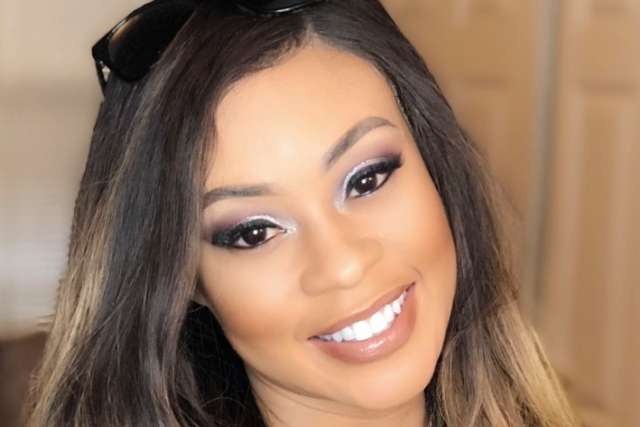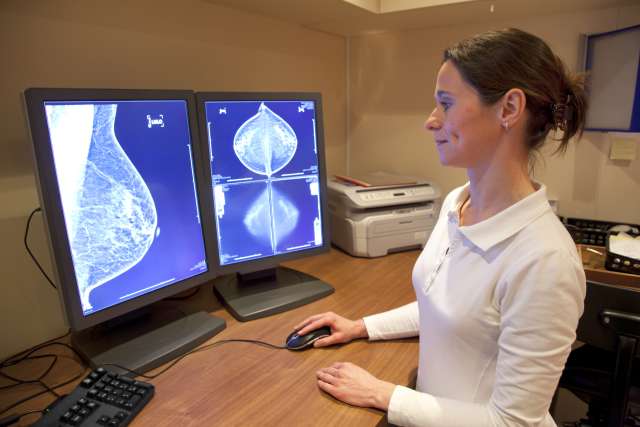When Marisa Hall celebrated five years cancer-free in September 2022, she decided to treat herself by getting a breast augmentation. After getting approval from her doctor, she made an appointment with , a plastic surgeon at UCLA Health.
The appointment was for February, but in December, a mammogram and a subsequent biopsy showed the cancer had returned in Hall’s left breast. In addition, a new cluster was identified a couple of centimeters down.
Hall is one of about with breast cancer each year, according to the Centers for Disease Control and Prevention. Breast cancer is second only to skin cancer in prevalence among women.
“My whole world shattered,” recalls Hall, 46, of Los Angeles. “I was thinking I was celebrating five years cancer-free, and the cancer came back again. My first thought was, ‘I want to do whatever I can do to get the cancer out of me.’ ”
Change of direction
Hall first met with , a surgical oncologist at UCLA Health, in January. Hall was given two options: a lumpectomy, in which the surgeon removes the tumor and any surrounding tissue that is cancerous but preserves the breast; or a mastectomy, in which one or both breasts are removed.
Hall’s 2017 breast cancer, an early-stage non-invasive ductal carcinoma in situ (abnormal cells in the milk ducts) was removed with a lumpectomy, followed by radiation therapy. The cancer was detected with a diagnostic mammogram and then a biopsy after Hall found a lump in her breast during a self-check.
This time, she opted for a mastectomy, which offers a greater chance of preventing the cancer from recurring.
Ahead of the surgery, Hall met with Dr. Slack, at the appointment she had initially made to discuss breast augmentation. In addition to aesthetic surgery, Dr. Slack’s clinical expertise includes breast reconstruction after mastectomy.
“I went in and said, ‘Dr. Slack, we’re having a different conversation today. We’re now talking about a mastectomy because the cancer came back. Dr. Baker speaks highly of you. Do you work together?’ ”
Facing her fears
It turned out, they do. Dr. Baker, a member of the , would do the initial surgery to remove one or both breasts and directly following, Dr. Slack would do the reconstruction, which involves placing a tissue expander as a temporary implant during the mastectomy. At a second surgery three months later, Dr. Slack would remove the expander and place the silicone implant.
The weeks leading up to her mastectomy in February were stressful, Hall recalls, as she worried about how she was going to deal with her body transformation.
“I wanted the cancer out of me, but I couldn’t help thinking, ‘What will I look like? Can I be intimate? What if it’s so horrifying I can’t look at myself?’ I didn’t know what to expect,” Hall says.
Women go through a diverse spectrum of emotions depending on how much information they receive before the consultation, Dr. Slack explains. Part of her job is to refocus those fears to make the process more positive.
“Some patients have already processed their diagnosis and what they need to do, and they’re excited to meet me and talk about what life is going to look like afterward,” Dr. Slack says. “I tell them they will get through this, and that what I do with them as far as reconstruction is what they will have for the rest of their life. We can try to change the breasts to the way they always wanted. Some opt for larger breasts or breast lifts, and this is their opportunity to do that.”
Reconstruction options
Breast reconstruction surgery is either implant-based or tissue-based. Implant-based uses silicone implants to replace the breast mound. Autologous fat transfer is then performed to add fat and thicken the skin to make it look more natural.
With tissue-based surgery, the entire breast can be made using excess tissue found on the body – often around the waist. This microsurgical process, called DIEP (Deep Inferior Epigastric Perforator) flap, has been in use for about a decade. Dr. Slack notes that with six microsurgeons on staff, including herself, UCLA is a high-volume center for this surgery.
“Marisa is very slender and doesn’t have a good donor site for that procedure,” Dr. Slack explains. “She currently has the tissue expanders, and her next stage of reconstruction should be her last because her nipples were preserved. It involves taking out the expander and placing that silicone implant.”
Dr. Slack notes detecting cancer early can reduce the number of interventions required.
“The earlier cancer is caught, you are less likely to require radiation or chemotherapy, which can prolong the treatment and can affect the results,” she says. “A radiated breast implant doesn’t do as well as a non-radiated implant long term.”
Surgery was ‘seamless’
Hall had her first surgery in February during one of the worst winter storms in Southern California history.
“I have to give UCLA credit – it was a seamless process the day of surgery, even though it was hailing outside,” she says. “Dr. Slack came in and introduced herself and her team to my family. Then Dr. Baker came in and did the same. Both were amazing and really helpful in helping me understand the process. They tag-teamed, and when I woke up it was over. I didn’t have any problems or complications.”
Hall had opted to have both breasts removed, which she notes was a good decision, as Dr. Baker found something concerning on Hall’s right breast during surgery. She is now back at her job in pharmaceutical sales, awaiting reconstruction surgery in June. She did not require chemotherapy or radiation therapy after the mastectomy.
A passionate dancer, foodie and traveler, Hall is looking forward to resuming those activities soon. She has returned to classes at the USC’s Marshall School of Business, where she is studying for her Executive MBA. She credits the support she received from faculty and her cohort, EMBA#38 – creating a meal train so she wouldn’t have to cook after her surgery and setting up an online fundraiser – for helping her through the process.
Her advice to other women?
“If you feel anything, get an exam so you catch it early,” she says. “And if you are diagnosed, make sure to create a support group of women who have been through the process and surround yourself with positive people.”
Jennifer Karmarkar is the author of this article.





